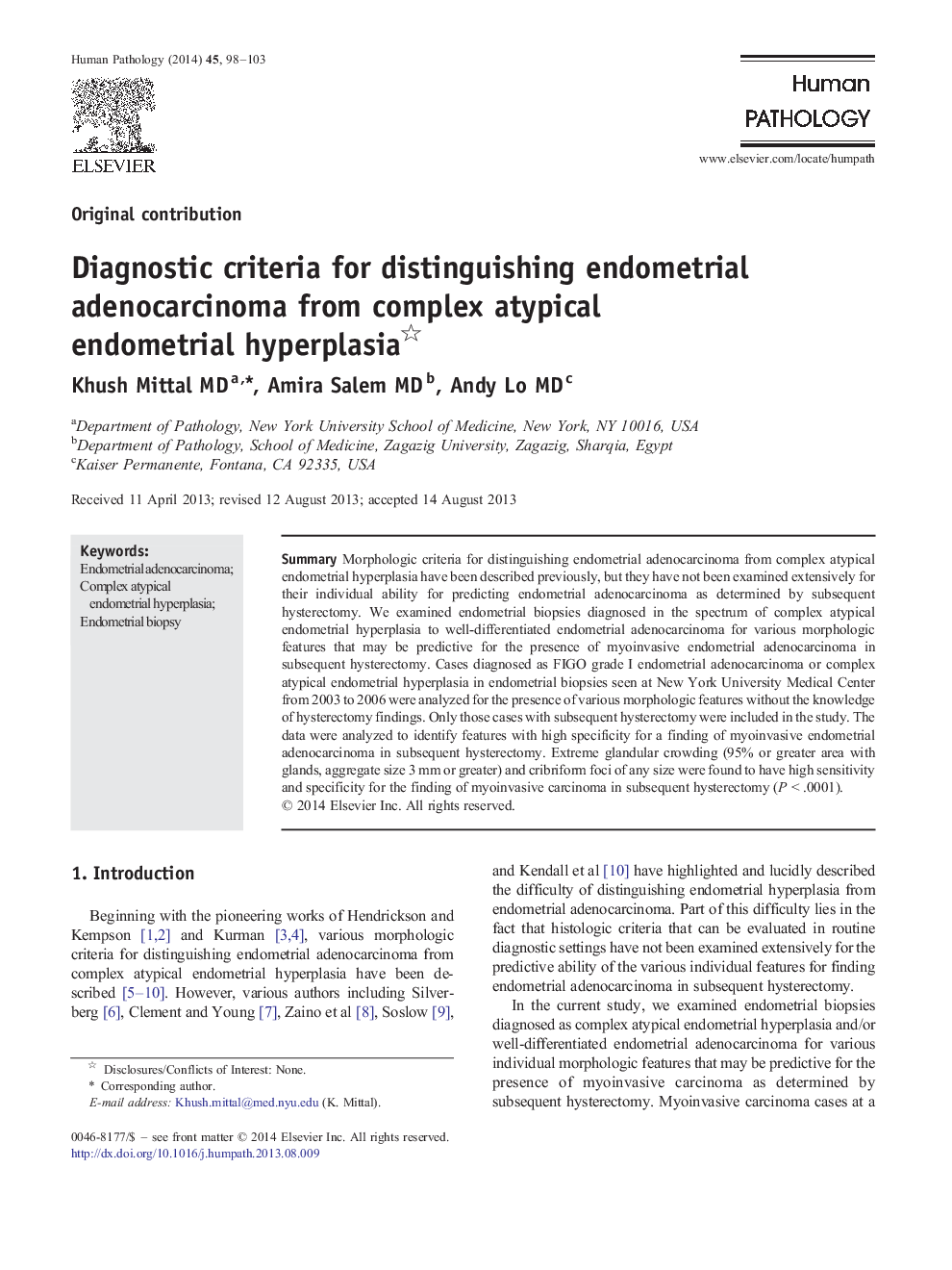| Article ID | Journal | Published Year | Pages | File Type |
|---|---|---|---|---|
| 4133421 | Human Pathology | 2014 | 6 Pages |
SummaryMorphologic criteria for distinguishing endometrial adenocarcinoma from complex atypical endometrial hyperplasia have been described previously, but they have not been examined extensively for their individual ability for predicting endometrial adenocarcinoma as determined by subsequent hysterectomy. We examined endometrial biopsies diagnosed in the spectrum of complex atypical endometrial hyperplasia to well-differentiated endometrial adenocarcinoma for various morphologic features that may be predictive for the presence of myoinvasive endometrial adenocarcinoma in subsequent hysterectomy. Cases diagnosed as FIGO grade I endometrial adenocarcinoma or complex atypical endometrial hyperplasia in endometrial biopsies seen at New York University Medical Center from 2003 to 2006 were analyzed for the presence of various morphologic features without the knowledge of hysterectomy findings. Only those cases with subsequent hysterectomy were included in the study. The data were analyzed to identify features with high specificity for a finding of myoinvasive endometrial adenocarcinoma in subsequent hysterectomy. Extreme glandular crowding (95% or greater area with glands, aggregate size 3 mm or greater) and cribriform foci of any size were found to have high sensitivity and specificity for the finding of myoinvasive carcinoma in subsequent hysterectomy (P < .0001).
